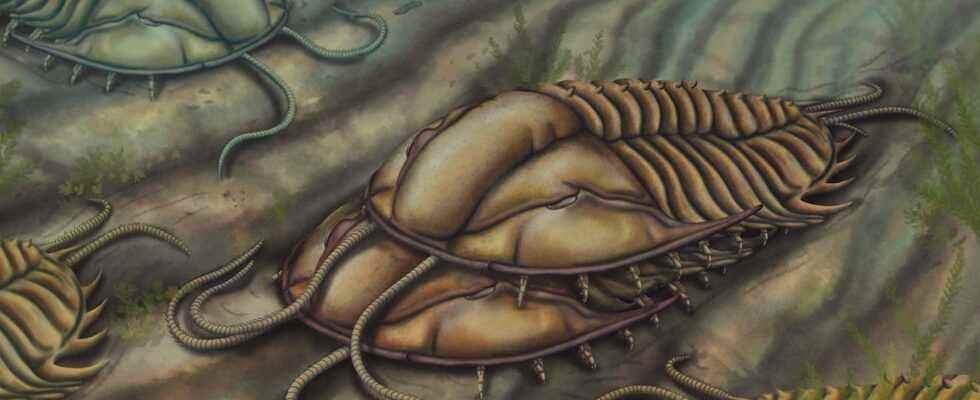These types of mating organs are quite common in sea creatures. Males use this to hold their partner while they shed their sperm. Clapping can be found in shrimp, aquatic insects or sharks, as well as in horseshoe crabs (Limulus polyphemus)which externally closely resemble trilobites.
Horseshoe crabs and trilobites are not closely related. However, experts assume that the extinct and still existing arthropods occupy the same niche. Both move across the sandy seabed and feed on what falls to the seabed. “There were even some trilobite species that basically look exactly like a horseshoe crab,” says Russell Bicknell, who did not participate in Losso and Ortega-Hernández’s study. Therefore horseshoe crabs are often used as a model to reconstruct the life cycle and behavior of trilobites.
The fossil from the Burgess Shale is a Rosetta stone of paleontology
The comparison between the claps of horseshoe crabs and the claws of Olenoides serratus Losso and Ortega-Hernández also helped to correctly name the supposedly stunted little legs in the fossil. The clatter also suggests that the bodies of male and female trilobites were constructed differently in some species. The colleagues “found a fossil à la Rosetta stone that allows us to confirm previous theories of sexual dimorphism,” says Bicknell. “That’s a really nice and important addition.”
However, Losso cautions that not all trilobite species may have had this trait. “At Olenoides serratus Finding clasps doesn’t mean all trilobites reproduced that way,” she says. Nevertheless, the study represents an important advance for the paleontology of trilobites. The finding would certainly be important for future work. It also shows that the animals had developed a greater variety of specialized limbs than previously thought – and this relatively early in their evolutionary history.
